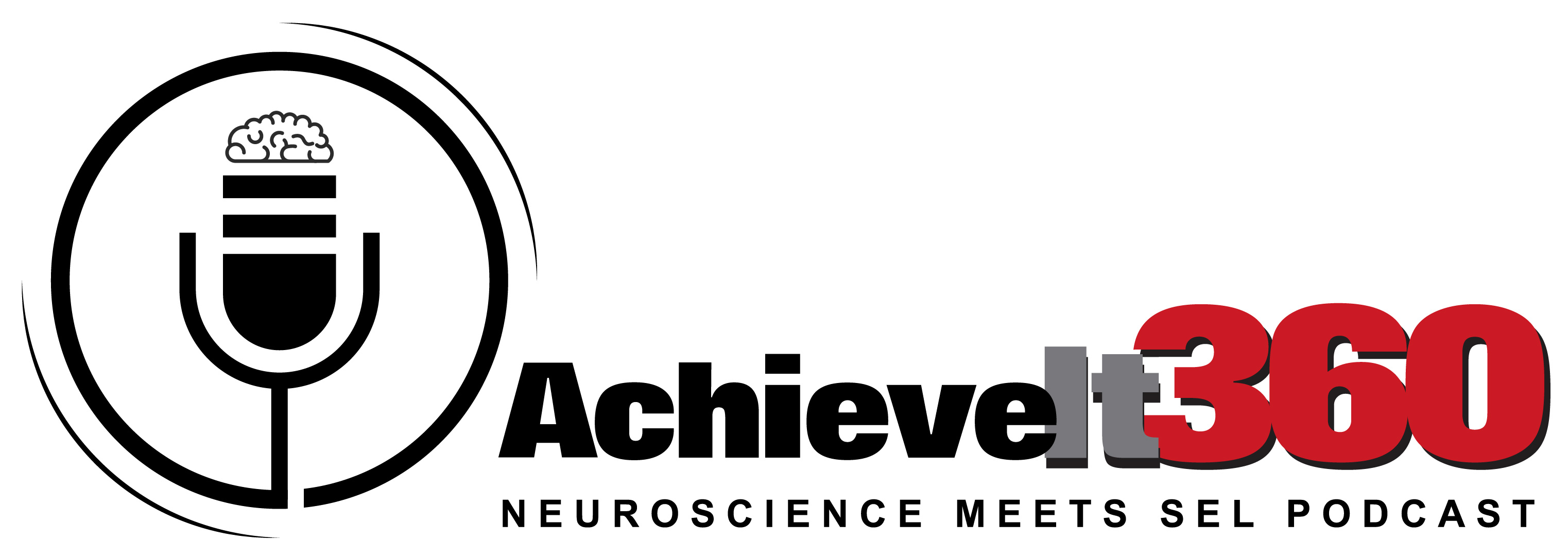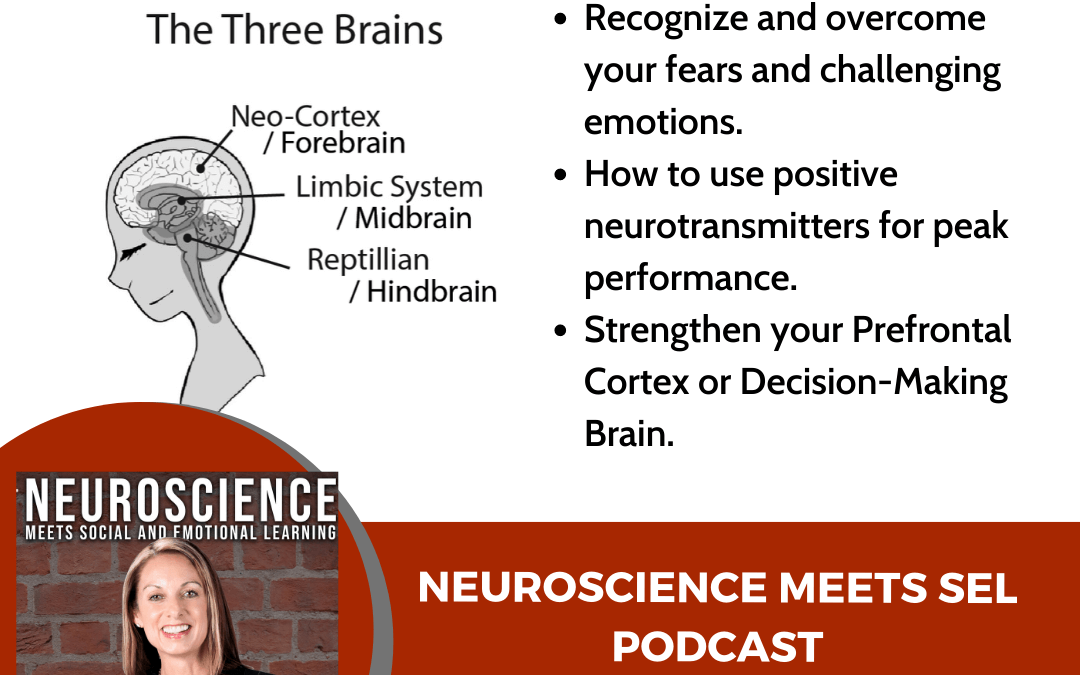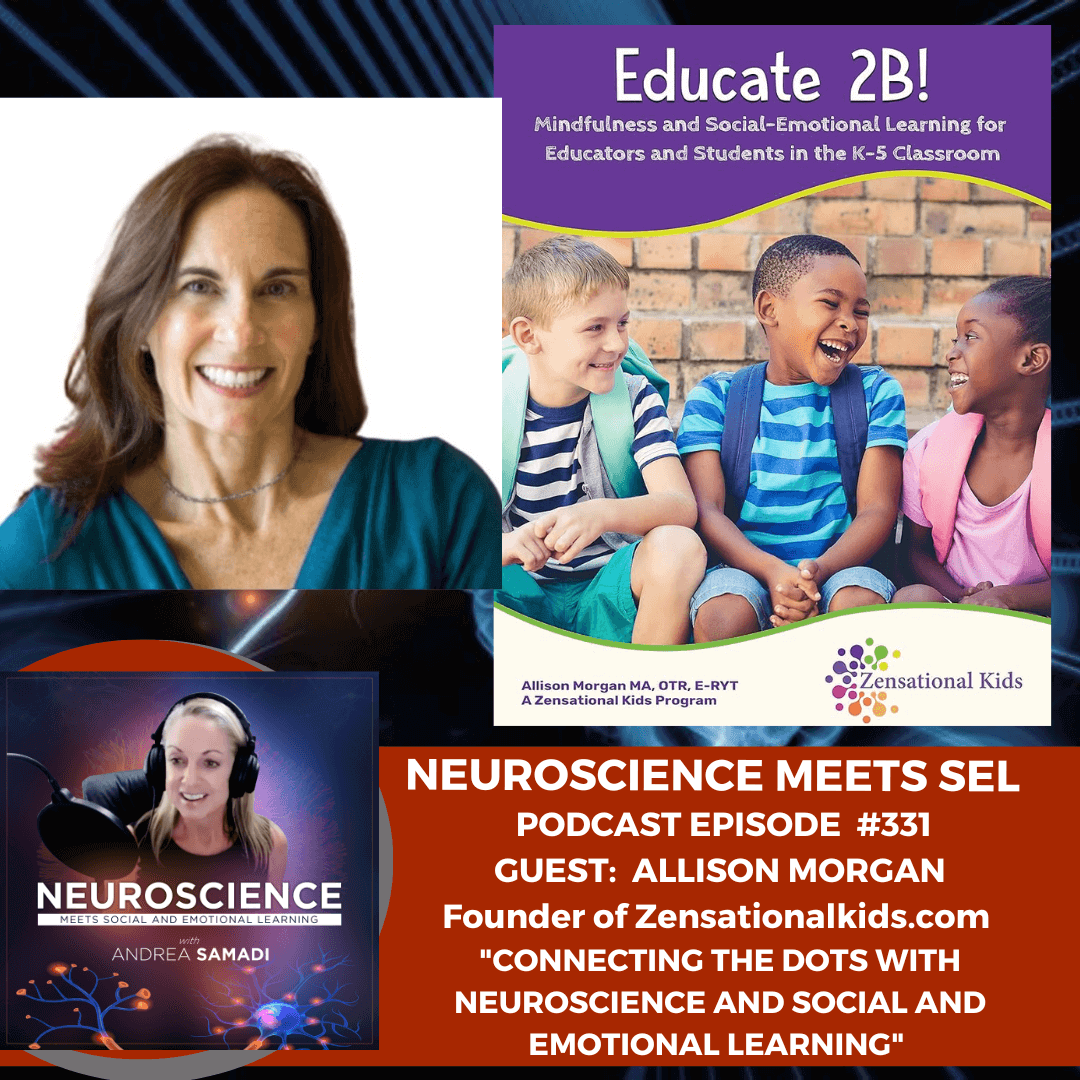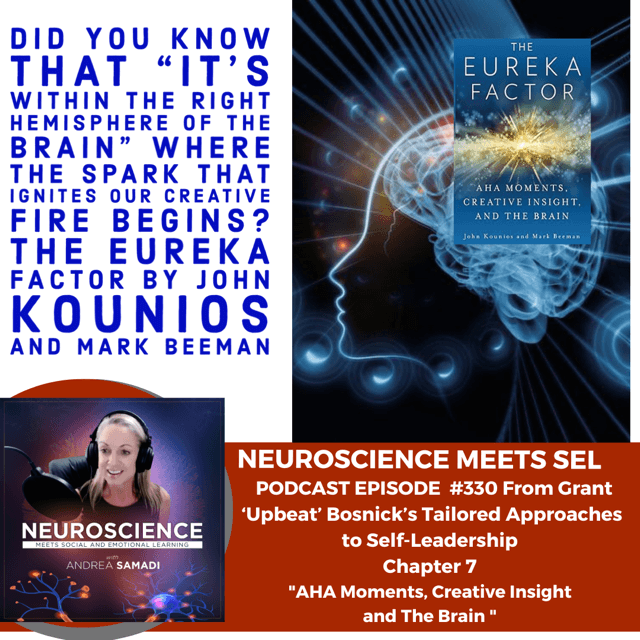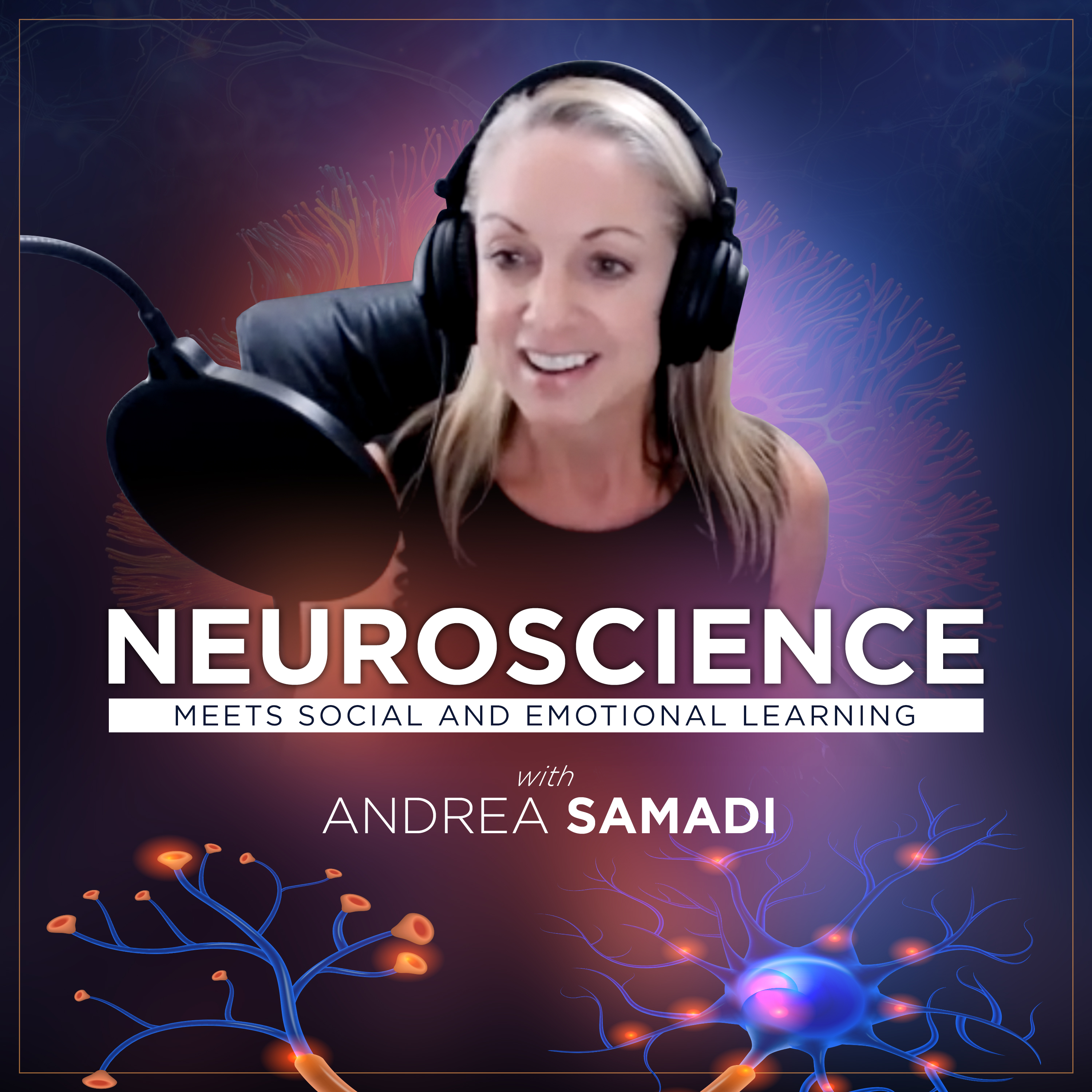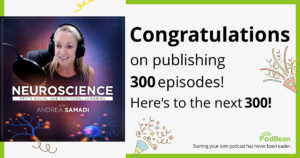This episode focuses on understanding the three main parts of your brain and I had to write this lesson and record this prior to the next podcast tomorrow with Dr. Friederike Fabritius as many of my questions to her will rely on the understanding of these three parts of the brain so I thought it was important to record this first. Let’s take a closer look at the human brain, so that the insights Dr. Fabritus will share tomorrow, will have more of an impact.
The human brain is the most complex organ in the body. Parts of the brain communicate with each other and enable us to enjoy food, communicate, and feel emotions; the brain shapes our entire world and all of our experiences. Understanding how to harness the power that exists within your own body is the key to unlocking the code that controls your results and future. What this future looks like is up to you.
Once you have an understanding of how your brain works, and you have some strategies to overcome the pitfalls associated with the three main parts of your brain, you can set yourself up for a razor’s edge advantage over someone else who might not be paying attention to the largest and most complex organ in the human body. To be honest, I was not paying attention to this part of the body until just a few years ago. No one had ever asked me what I was doing for my brain health—not until I started researching in the area of neuroscience did I know these strategies existed. So, don’t worry if this is new to you. We all start at this place.
There are three parts of the brain that I think everyone should understand, whether you are five years old, or 55 years old, we can all understand the basics of how our brain operates for improved results.
Understanding the Reptilian Brain: The Ancient Instinctual Brain also known as The Hindbrain
The brain stem (imagine this part at the top of your spine on the back of your neck) is the oldest part of the brain and is often referred to as the reptilian brain.[i] This is where vital body functions such as heartbeat, respiration, body temperature, and digestion are all monitored and controlled. The brain stem also holds the reticular activating system (RAS), which is responsible for the brain’s alertness—regardless of whether we’re asleep or awake.
This part of the brain functions to keep us alive and safe and works closely with the entire body as well as the limbic system to create our emotional state of mind. The brain stem does not work alone. It is linked to the limbic system above it (in the middle of the brain) to assist, for example, in creating both our fighting states when we feel anger and our fleeing states when we feel fear.[ii]
This Ancient Instinctual Brain Controls Our-
- Sensory motor functions (how our body runs)
-
- Survival instinct of fight, flight, freeze, faint
When we understand that we can’t help the fact that when we feel fear with something, consciously or unconsciously, our Reptilian Brain reacts on its own with the urge to fight, flight, or freeze.
- FIGHT- is when we react instead of responding to a situation (those times when we let our emotions take control)FLIGHT- is when we run awayFREEZE- is when we stay frozen and don’t even try
To overcome the pitfalls of the Reptilian Brain, we just need to learn strategies for overcoming our fears that are natural, and instinctual, coming from the part of our brain that was designed to keep us alive. Those who are longtime meditators speak of the ability to take the time to respond to a situation rather than reacting but if you are looking for a quick fix, try these simple strategies.[iv]
S-STOP whatever you are doing
T-TAKE deep belly breaths to bring more oxygen to your brain
O-OBSERVE and think “how am I feeling right now in the moment?” Can you name the emotion? When you can name the emotion, science has proven that soothing neurotransmitters are released to calm you down.[v]
P- PROCEED with whatever you are doing with a new awareness.
Our next guest Dr. Friederike Fabritius,[vi] talks about this strategy in her book, The Leading Brain: Neuroscience Hacks to Work Smarter, Better, Happier.[vii]
She also dives into the importance of adding a sense of fun and fear to your work since fun will add the neurotransmitter dopamine that will help you to retain information better and boost your performance, while just the right amount of fear when you try new things, and push your boundaries will release noradrenaline, a positive hormone that’s released when you have a challenge. Adding fun and fear will prevent boredom and drive you towards focus where the brain will release acetyl choline during this time of focused attention to help us to achieve flow or these high levels of peak performance that we all seek.[viii]
Understanding the Second Part of the Brain: The Limbic System
Above the brain stem and below the cerebellum (in the midbrain imagine this part of the brain in the middle) is a collection of structures about the size of a lemon, referred to as the limbic system and sometimes called the mammalian brain or Midbrain. Most of the structures in the limbic system are duplicated in each hemisphere. This area is also responsible for “regulating internal chemical order .”[ix]
The Limbic Brain or The Emotional Brain Controls Our-
- Feelings/emotions
- Motivations
- The brain’s reward circuit
- Memory, and our
- Immune system
This part of the brain responds really well with motivation and rewards and since it’s the seat of our emotions, this part of the brain will take over ALL the other parts of the brain because our emotional Limbic Brain always wins.[x]
In this part of our brain we all have a REWARD and a THREAT system. Most of us work well when we can see the reward for what we are working on. Our brain will release dopamine as we check off our to-do list items and make progress towards our goals. When we are working in a reward state, we will be happy, in a good mood, high performing and achieving our goals. This state is where we should all aim to spend our time as we will be the most productive.
But when we are in a threat system, our brain will release cortisol and our prefrontal cortex will shut down, making us unable to work as we go into the fight, flight, freeze state. Some people do work well with an element of threat to motivate them, (like when you have a deadline for something you are working on) but too much threat can cause too much stress and lead to eventual burn-out.[xi]
To overcome the pitfalls of the Emotional Limbic System:
-
- Find ways to make the work you do fun so that dopamine (the neurotransmitter that helps us to feel pleasure and satisfaction) will be released and will help you to see rewards and will motivate you to move towards them.Laugh more because dopamine (this pleasure and satisfaction chemical) is released with laughter. Always keep that funny person on your team who makes everyone laugh. They will help boost the dopamine of your entire team, making everyone motivated towards their goals.Find ways to keep things new since the brain loves novelty. Remember—we don’t pay attention to boring things.
- Always push your boundaries and challenge yourself to prevent boredom. The brain will release the positive neurotransmitter noradrenaline that will increase alertness and energy.
OTHER IMPORTANT PARTS OF THE LIMBIC SYSTEM that I think are important to know about.
The thalamus is the first part of the brain to receive sensory information (except smell) coming from the outside world.
The hippocampus plays a crucial role in converting short-term memory to long-term memory.
The amygdala plays an important role with emotions, especially fear.
The anterior cingulate connects attention, emotion, social function, and pain perception.[xiii]
The Basal Ganglia is an important part of the brain connected to the cortex, thalamus and brainstem and is connected to procedural learning, habit learning, cognition and emotion. Stay tuned for the next episode to understand the power associated with this part of your brain.
Finally, Understanding the Third Part of the Brain:
The Neocortex/The Decision-Making Brain also called our Forebrain where our Prefrontal Cortex Lives.
The neocortex is the “outer bark of the brain”[xiv] that consists of folded gray matter and resembles a walnut. (Imagine this part of the brain as being folded over the midbrain and connecting all parts together). It is divided into areas that control specific functions that “ultimately are about making maps of various things—from perceptions of the outside world to ideas about the brain and well-being .”[xv]
The Genius, Decision-Making part of the brain is the newest part of the brain (think of it this way—the brain develops from back to front—the oldest part with our brain stem and the newest is the front of our brain) and it tells us to be LOGICAL and REASONABLE with everyone. This part of the brain controls our
- Thinking and reflecting
- Perceiving and remembering
- Reasoning and planning
- Language development
- Multiple intelligences, and our
- Awareness and self-awareness
This is the part of our brain that determines the level of success we will see in our careers. It’s also the part of our brain that reacts when we are tired, or when someone pushes our buttons, we can lose control of the Decision-Making Brain and do or say things are not in our normal character.
It is reassuring to know why we lose control, and how to repair our relationships with those around us when this occurs by addressing it, and stepping back, and then taking some time out before coming back to regain composure.
To overcome the pitfalls of the Decision-Making Brain we can:
-
- Get plenty of sleep and exercise so that we keep our prefrontal cortex operating at its best.Remember that when we drink alcohol, it will interfere with our decision-making brain and too much alcohol can lead to poor judgment, and even impair your memory.
-
- You can take brain supplements to help you to achieve more focus and alertness.
-
- I follow Dr. Daniel Amen’s
-
- work and have learned what my brain type is so that I can be sure to be taking the right supplements for my brain type
- and follow the best nutritional plan for brain health.
When we can find strategies to keep our brain working at its best, we will perform at our best. I hope these strategies and an understanding of the 3 parts of your brain help you to achieve higher levels of achievement. I’m excited to speak with Dr. Friederike Fabritius tomorrow morning and will dive deeper into the neuroscience of leadership and high performance. See you next tomorrow.
RESOURCES:
Andrea Samadi Level Up: A Brain-Based Strategy to Skyrocket Student Success and Achievement (2015 Wheatmark, Tucson, AZ).
(Lesson 2: Use Your Brain Wisely)
REFERENCES
[i] David D’Sousa, How the Brain Learns, 3rd Ed. Page 18 (Corwin Press, Thousand Oaks, CA, 2006).
[ii] Dr . Daniel J . Siegel, “Brain Insights and Well-Being,” Inspire to Rewire, Psychology Today, January 7, 2015 https://www.psychologytoday.com/us/blog/inspire-rewire/201501/brain-insights-and-well-being
[iii] ibid
[iv] Friederike Fabritius, “Take Charge of our Emotions” Published Dec. 10, 2016 https://www.youtube.com/watch?v=liu3cbEB3H8&t=1759s
[v] Dan Siegel “Name it to Tame it” YouTube Published Dec. 8th, 2014 https://www.youtube.com/watch?v=ZcDLzppD4Jc
[vi]Friederike Fabritius: “Fun, Fear, and Focus: The Neurochemical Recipe for Achieving Peak Performance” | Talks at Google Published Jan.15, 2019 https://www.youtube.com/watch?v=pWi-oCySuFA
[vii] The Leading Brain by Friederike Fabritius (TarcherPerigee; Reprint edition February 20, 2018).
[viii] Friederike Fabritius: Dopamine, Acetylcholine, and Focused Attention https://www.youtube.com/watch?v=T0C93OcfzGk
[ix] Dr . Joe Dispenza, “TedTalks with Dr . Joe Dispenza,” TED video, 17:50 posted February 8, 2013 https://www.youtube.com/watch?v=W81CHn4l4AM&t=105s
[x] Friederike Fabritius “Why the Limbic System Always Wins” YouTube Published https://www.youtube.com/watch?v=bb5UITosUUI
[xi] Friederike Fabritius Prefrontal Cortex, Limbic System and Performance YouTube PublishedOct. 26, 2016 https://www.youtube.com/watch?v=xDuQM94RT9M
[xii] John Medina, Brain Rule #4 http://www.brainrules.net/attention
[xiii] Dr . Daniel J . Siegel, “Brain Insights and Well-Being,” Inspire to Rewire, Psychology Today, January 7, 2015 https://www.psychologytoday.com/us/blog/inspire-rewire/201501/brain-insights-and-well-being
[xiv] ibid
[xv] ibid
[xvi]Alcohol Memory Blackouts and the Brain https://pubs.niaaa.nih.gov/publications/arh27-2/186-196.htm
[xvii]12 Prescriptions for Creating a Healthy Brain and Life by Dr. Daniel Amen Jan. 15, 2018 https://www.amenclinics.com/blog/12-prescriptions-for-creating-a-brain-healthy-life-part-1/
[xviii] http://danielamenmd.com/
[xix] https://brainhealthassessment.com/
Podcast: Play in new window | Download
Subscribe: Apple Podcasts | RSS
